We may receive a commission when you use our affiliate links. However, this does not impact our recommendations.
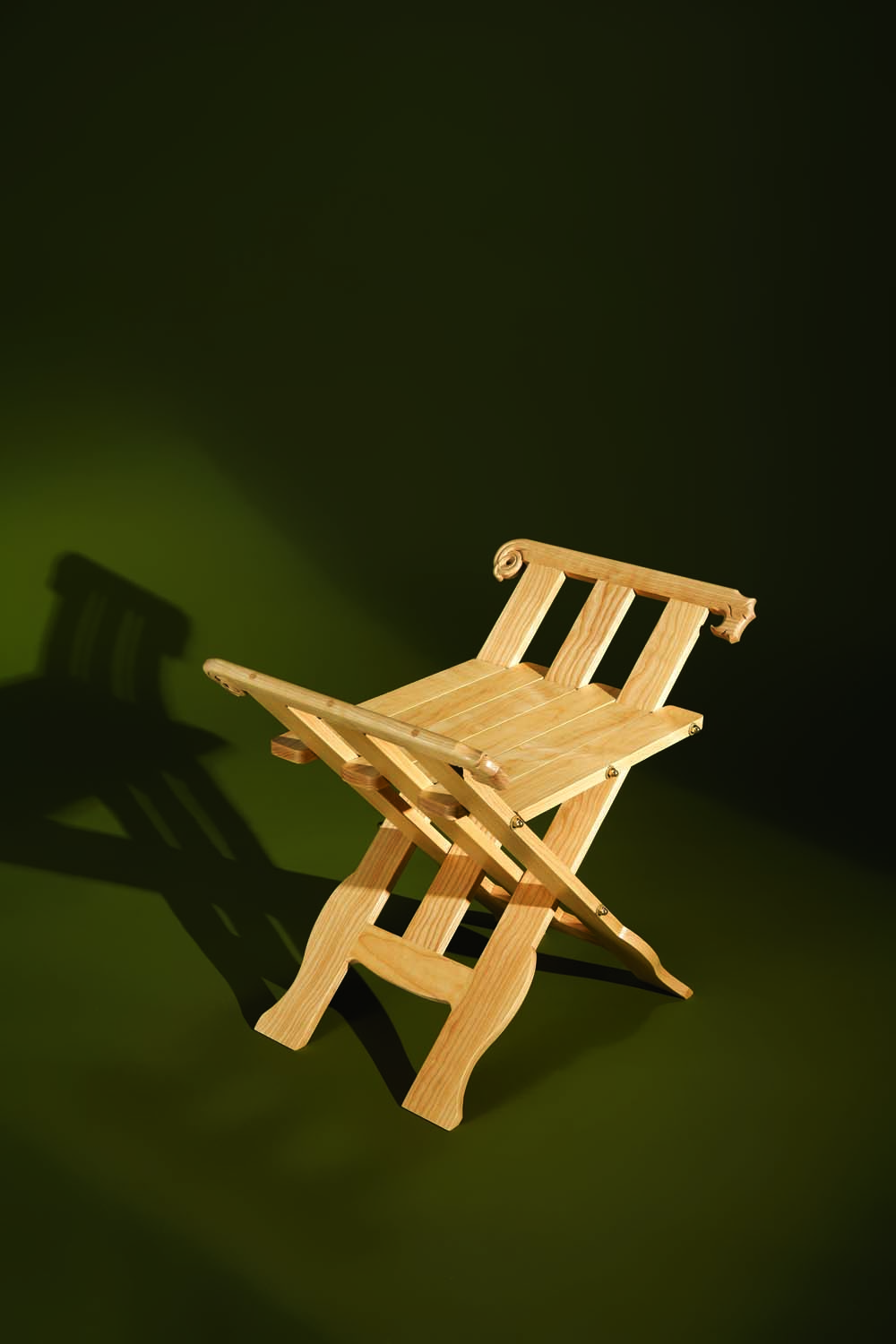
Have you ever heard of a “faldstool?” You’ve probably seen one in a movie that’s set in Medieval or Renaissance times—it’s the distinctive portable chair that a nobleman or Bishop sits on, the one with curved legs and arms that looks like it would fold together. The oldest faldstools really did fold up, which makes building one an intriguing woodworking challenge.
This modern version was designed by Rick Hardin, an artisan who sells his wares at Scandinavian-themed craft shows. (You can see his work at Vikingkrafts.com.) It’s based on a simple 16th century German faldstool with straight arms and legs, but Rick’s version is wider and taller—for modern-day Vikings—and amazingly sturdy.
I built the one pictured here from ash, a wood that’s central to Norse mythology. Jock Holmen, a local carver who first introduced me to Rick’s work, embellished the arms with a Nordic dragon motif. Rick’s arms are simpler; you’ll see them in the drawings and how-to photos.
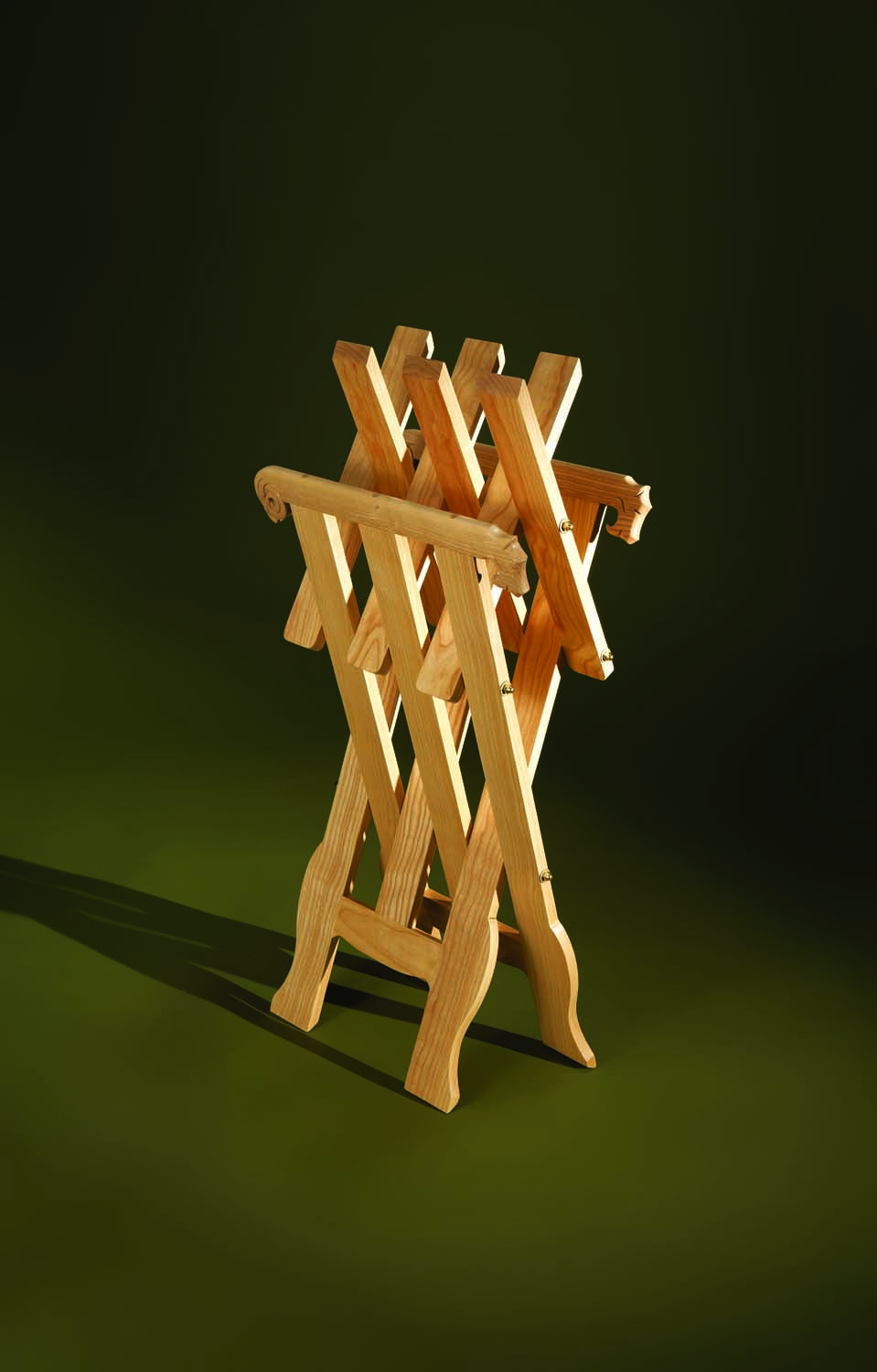
Lifting the seat causes the stool to fold up like an old-fashioned clothes rack. See how it’s put together below.
Spacers are the key
All of the stool’s pieces are 3/4″ thick, so you could use pre-milled lumber, if you wish. If you’re using rough lumber, cut all of the parts oversize in length and width, then joint and plane them to 3/4″ thick (see Cutting List).
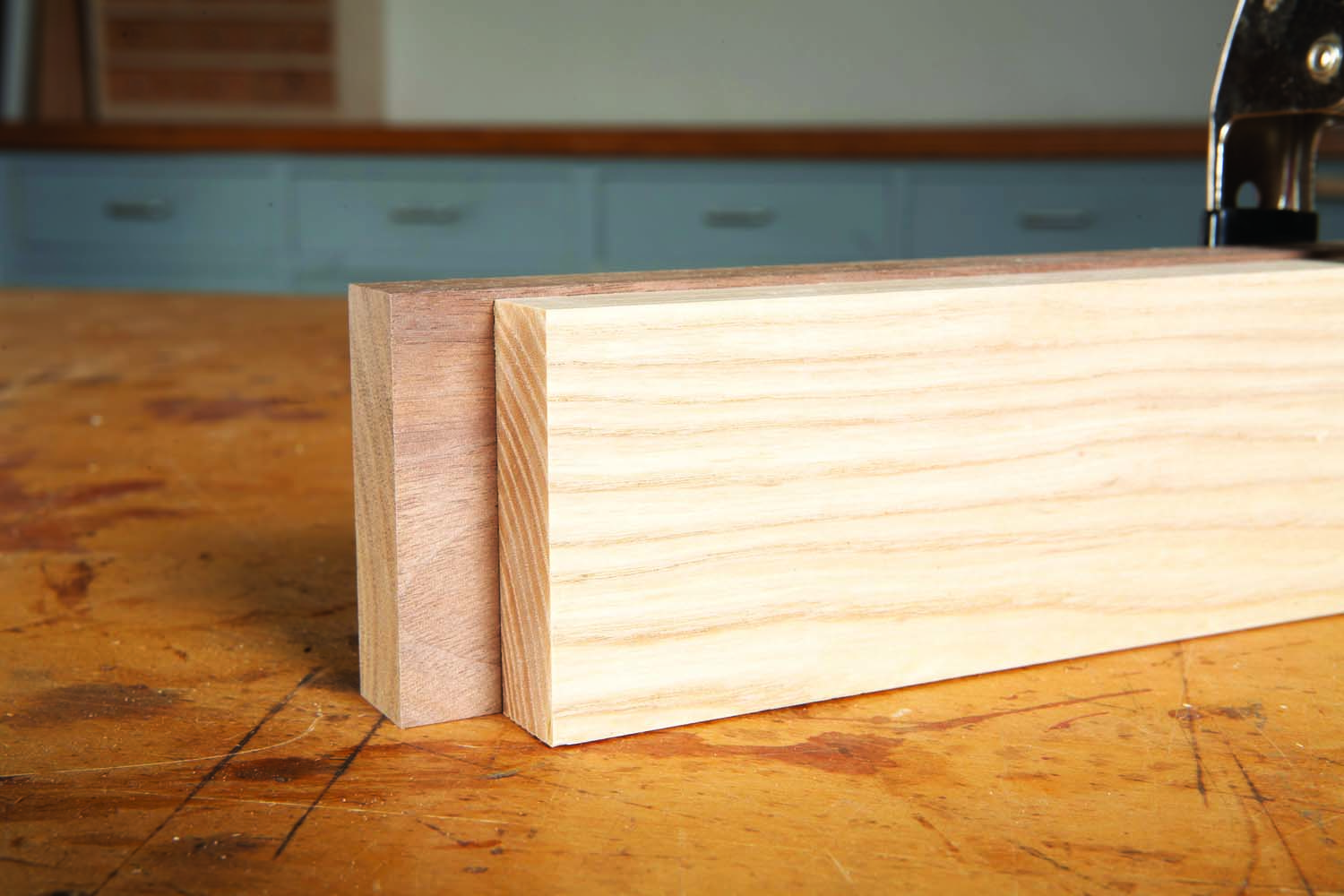
Photo 1. Make a set of spacers 1/16″ wider than the parts of the stool that fold together. The spacers will help you create the right amount of clearance between those parts, so they won’t bind.
Joint one edge of the legs (A) and rip them to final width. Joint this side, too, then trim the legs 1/4″ extra-long. Joint one edge of the center stiles (B), bottom rails (C) and seat slats (D), then rip them about 1/32″ extra-wide. Joint the ripped sides, taking a 1/32″ deep cut to bring the parts to final width. Trim all of these pieces 1/4″ extra-long.
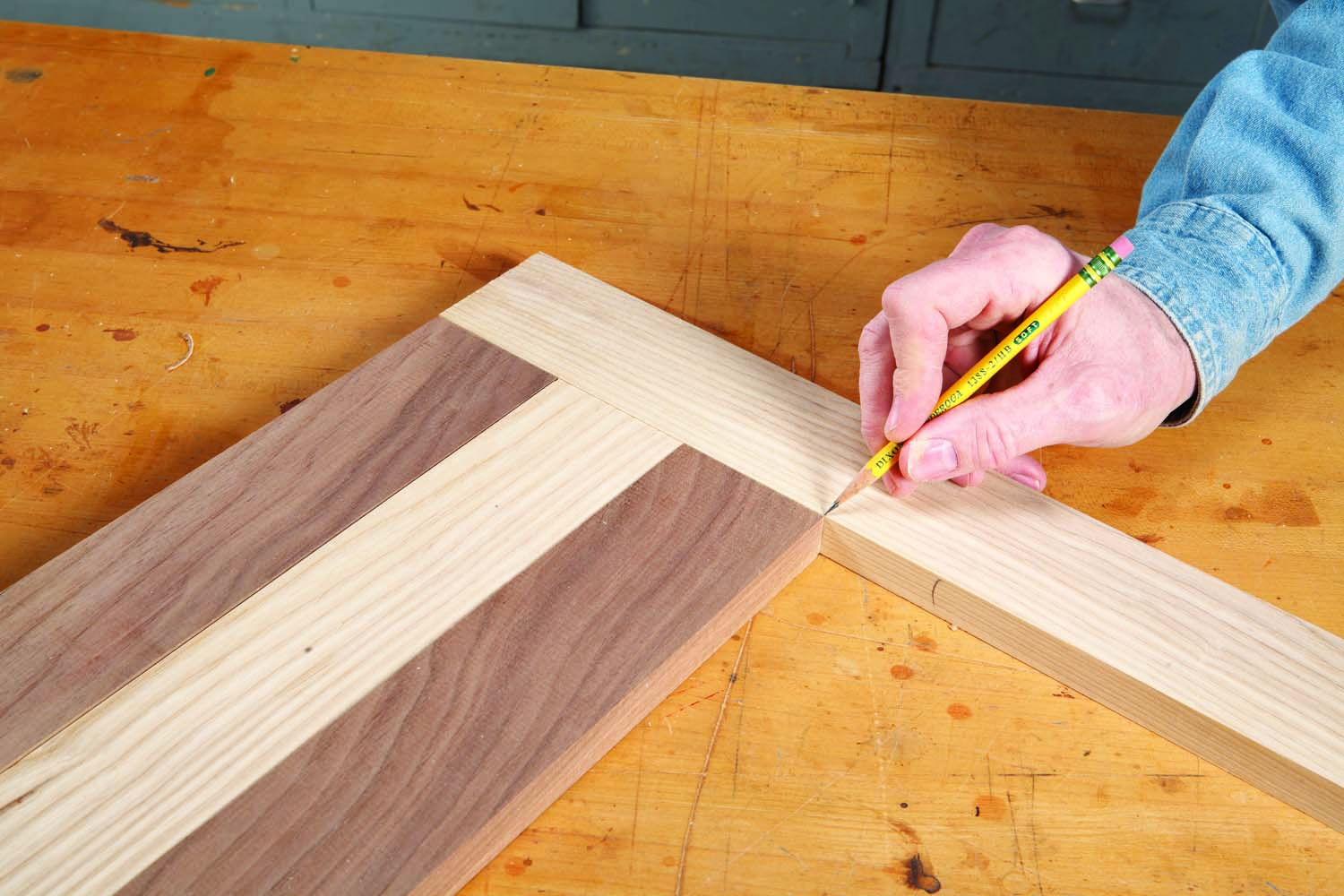
Photo 2. Use the spacers to determine the exact length of the stool’s bottom rail. The rail’s length equals the width of two spacers plus the width of the center stile.
Make four spacers (F) from 3/4″ stock. They should be exactly 1/16″ wider than the seat slats (Photo 1). Place two spacers alongside a center stile to mark off the exact length of the bottom rails (Photo 2). Trim the rails to length.
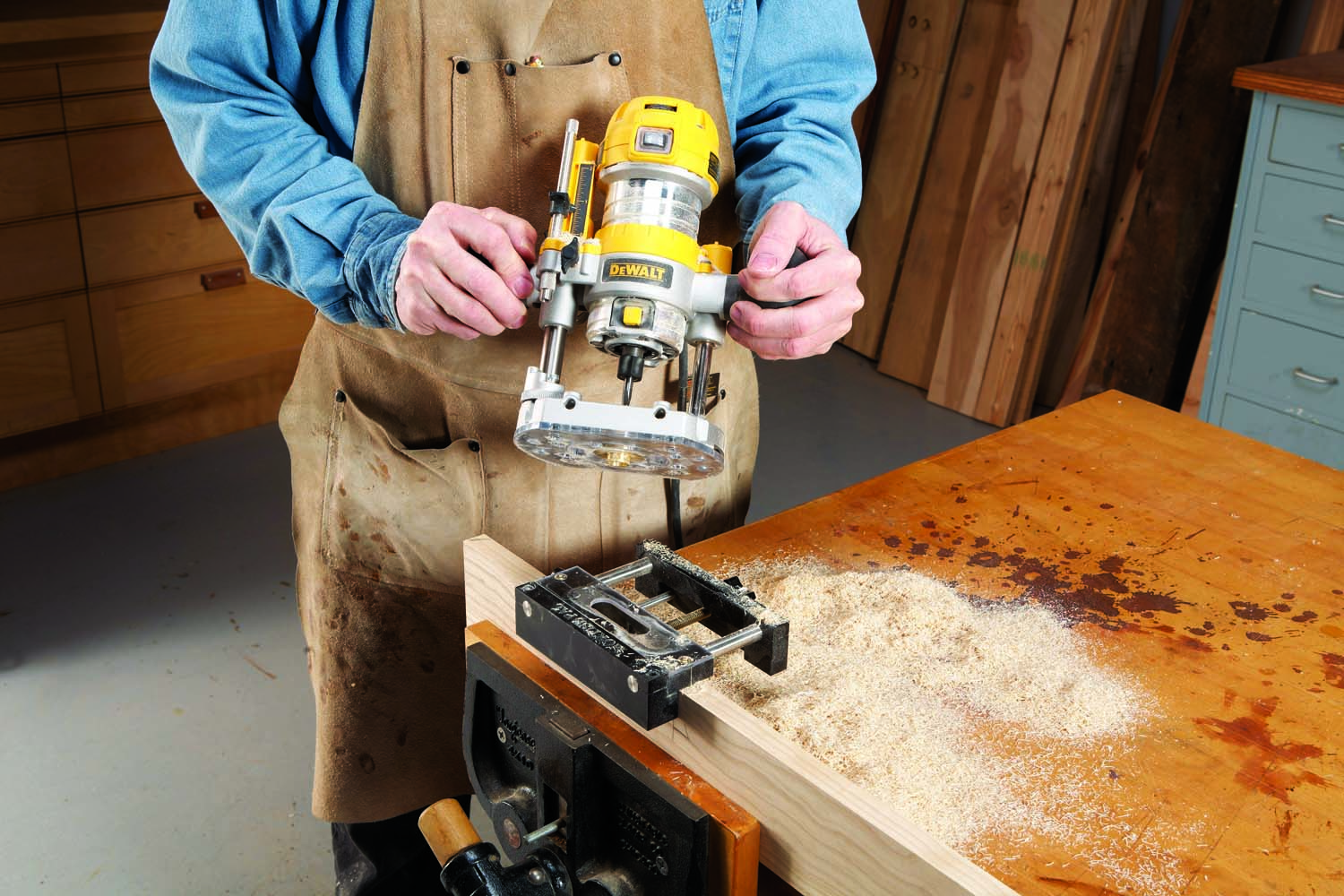
Photo 3. Rout mortises for loose tenons in the edges of the legs and in the ends of the bottom rails and center stiles. Make the tenons and glue them into these pieces.
I used 1/4″ loose tenons to join the lower half of the stool, but 3/8″ dowels or #10 biscuits would work as well. I also used a commercial jig for guiding the router (Photo 3), but of course there are many shop-made devices that could do the trick. Rout 1-3/4″ wide mortises in the ends of the bottom rails. (Note that the mortises aren’t centered top to bottom; see Fig. 02). Next, rout mortises of the same size in the ends of the center stiles and in the legs. Lastly, rout mortises in the top sides of the bottom rails (Photo 4). (Note that these mortises are 1-7/8″ wide.)
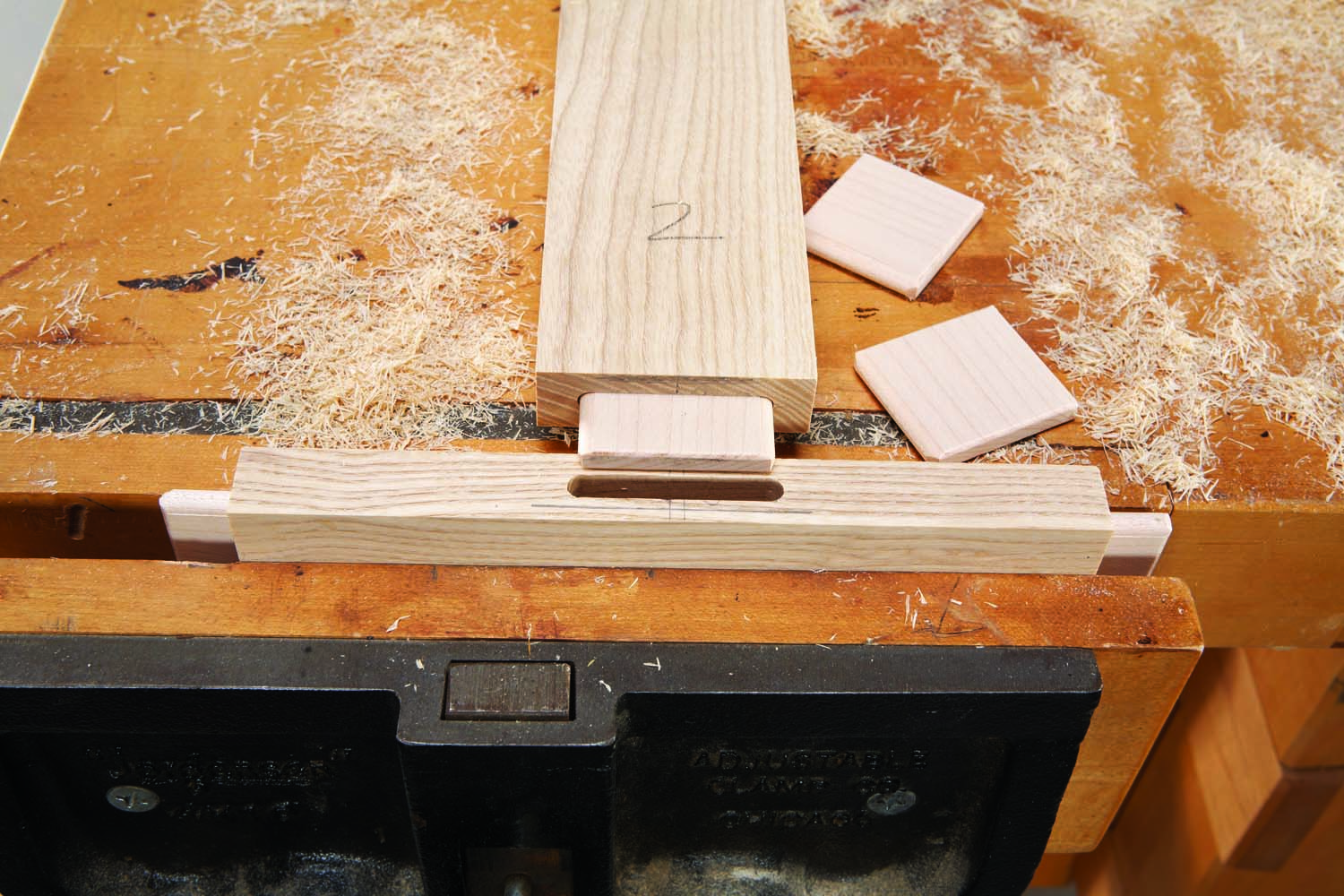
Photo 4. Rout an extra-wide mortise in the top side of the bottom rail. During glue-up, this mortise’s extra width will allow you to shift the center stile side-to-side into the correct position, if necessary.
Make 1-3/4″ wide loose tenon stock (G) and cut it to length. Glue tenons into the ends of the center stiles and bottom rails. Draw profiles on the bottom rails (Fig. 04), then bandsaw and sand them to final shape.
Cut the leg profile
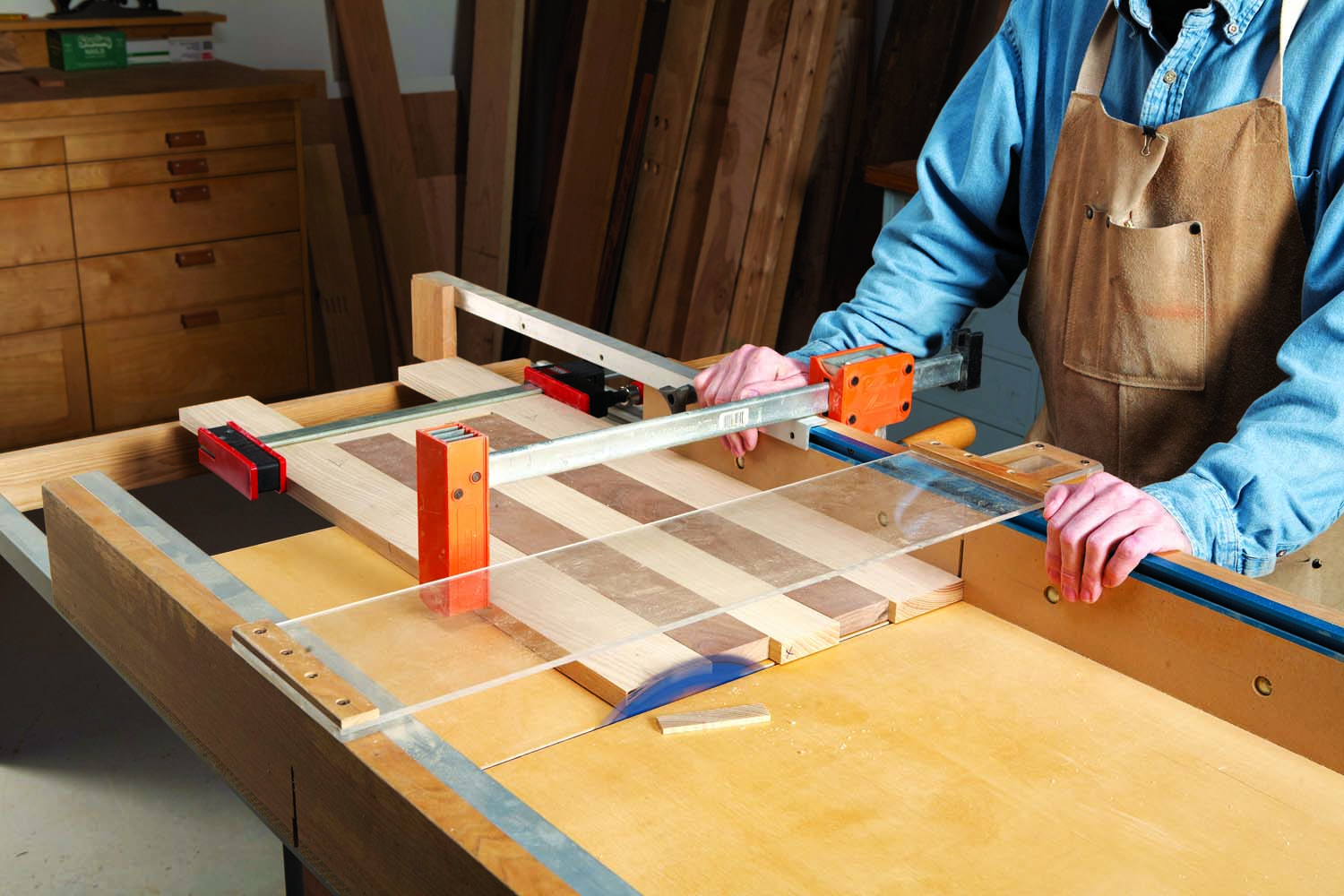
Photo 5. Assemble each half of the stool, without glue, using the spacers. Trim the legs and center stile to final length as a unit, using a crosscut sled.
In the next step, you’ll cut the legs and center stiles to final length. The top ends of these pieces have to line up in order to receive the top rail (E). The best way to ensure this is to assemble each side of the stool, without glue, and cut all three pieces at the same time (Photo 5). At least, that’s what I thought when I first built the stool. After I glued the pieces together, later on, I found that some had shifted. The tops of the legs and center stile were no longer in alignment. No problem—I just trimmed them as a unit again.
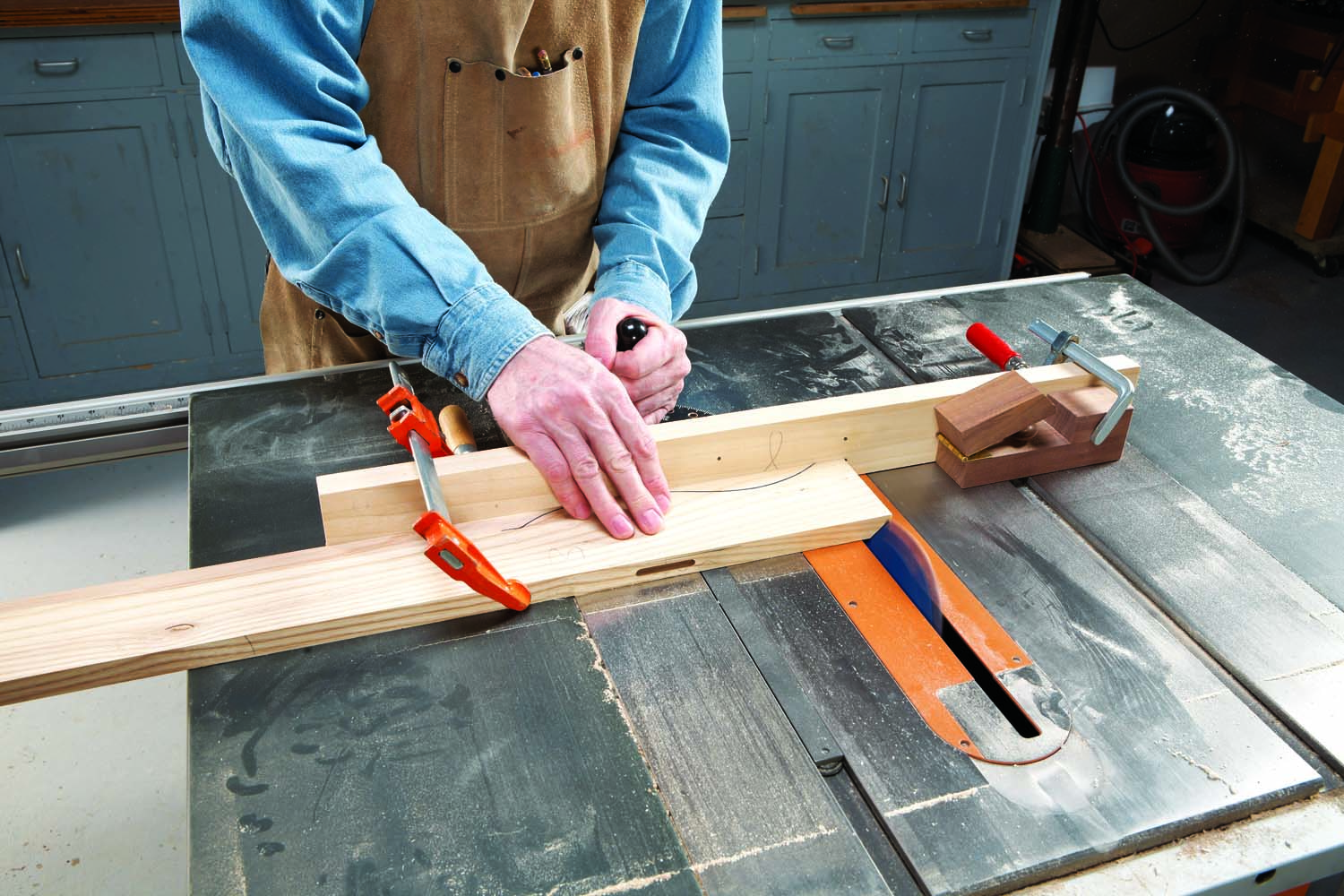
Photo 6. Cut miters on the ends of the legs and seat slats. Use a hinged stop block to position the pieces. Before you make each cut, open the hinged end to prevent the offcuts from getting trapped, which could cause kickback.
Trim the seat slats to final length. Round the corners of one end of each slat (Fig. 06), then saw 45° angles on the other ends (Photo 6 and Fig. 05). Precision is important here—the flat portion left on the angled end of the slats must be exactly 1/8″ wide so the measurements for drilling holes through the slats work out correctly. Saw 45° angles on the bottom ends of the legs at the same time.

Photo 7. Rip the top portion of the legs to final width using a bandsaw, fence and featherboard. Once you reach the curved portion of the leg’s profile, turn off the saw and back out of the cut.
With joints cut and ends trimmed, it’s time to finish the legs. Draw profiles on the lower ends of the legs (Fig. 03). then use a bandsaw to rip the upper half of the legs to width, stopping the cut where the profile’s curve begins (Photo 7). After repeating the process for all the legs, saw their profiles. Smooth the sawn surfaces; I used a No. 80 scraper on the ripped portion, but a block plane would also do the job. However you smooth it, make sure this section stays straight.
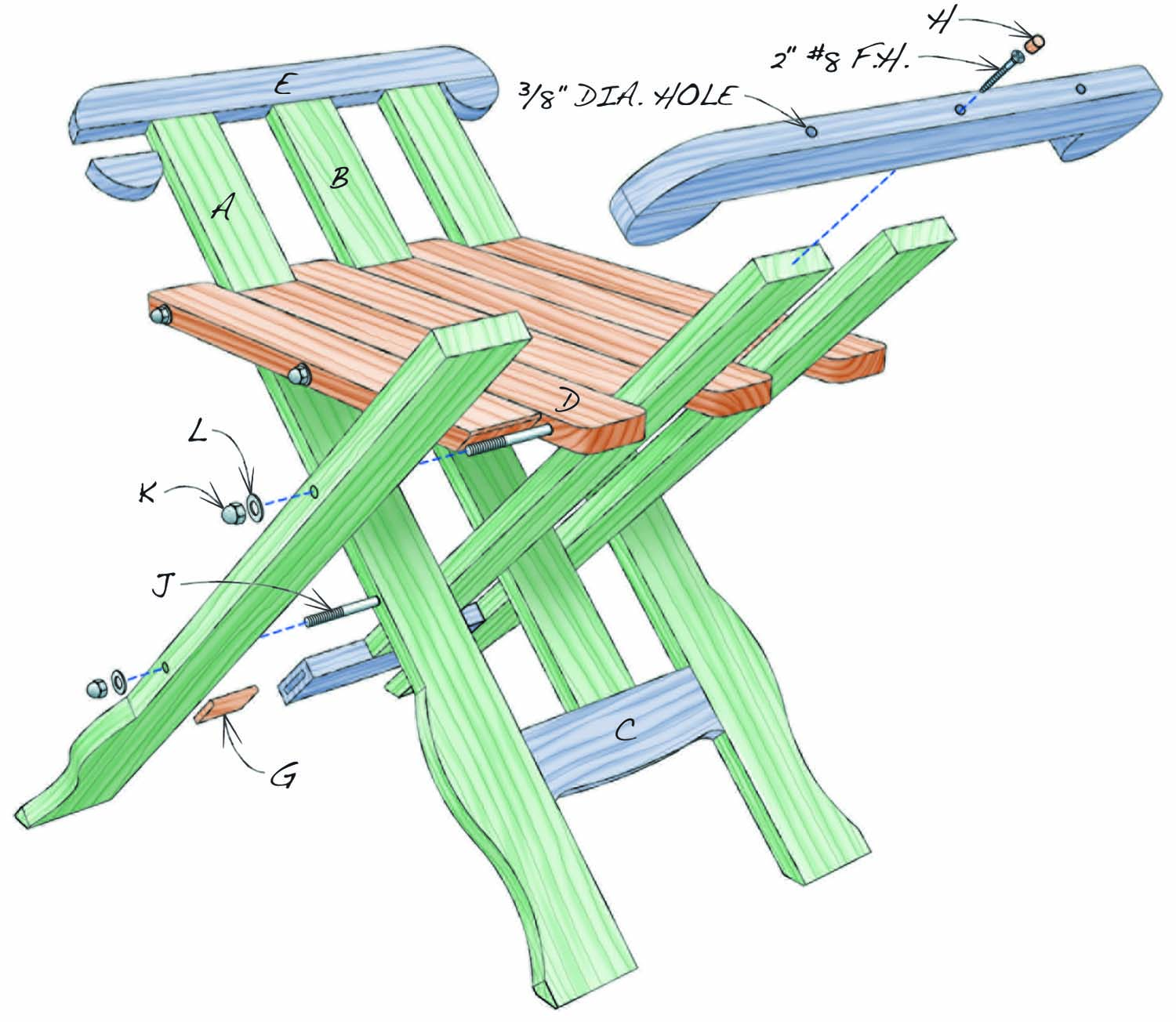
Fig. 01. Exploded View
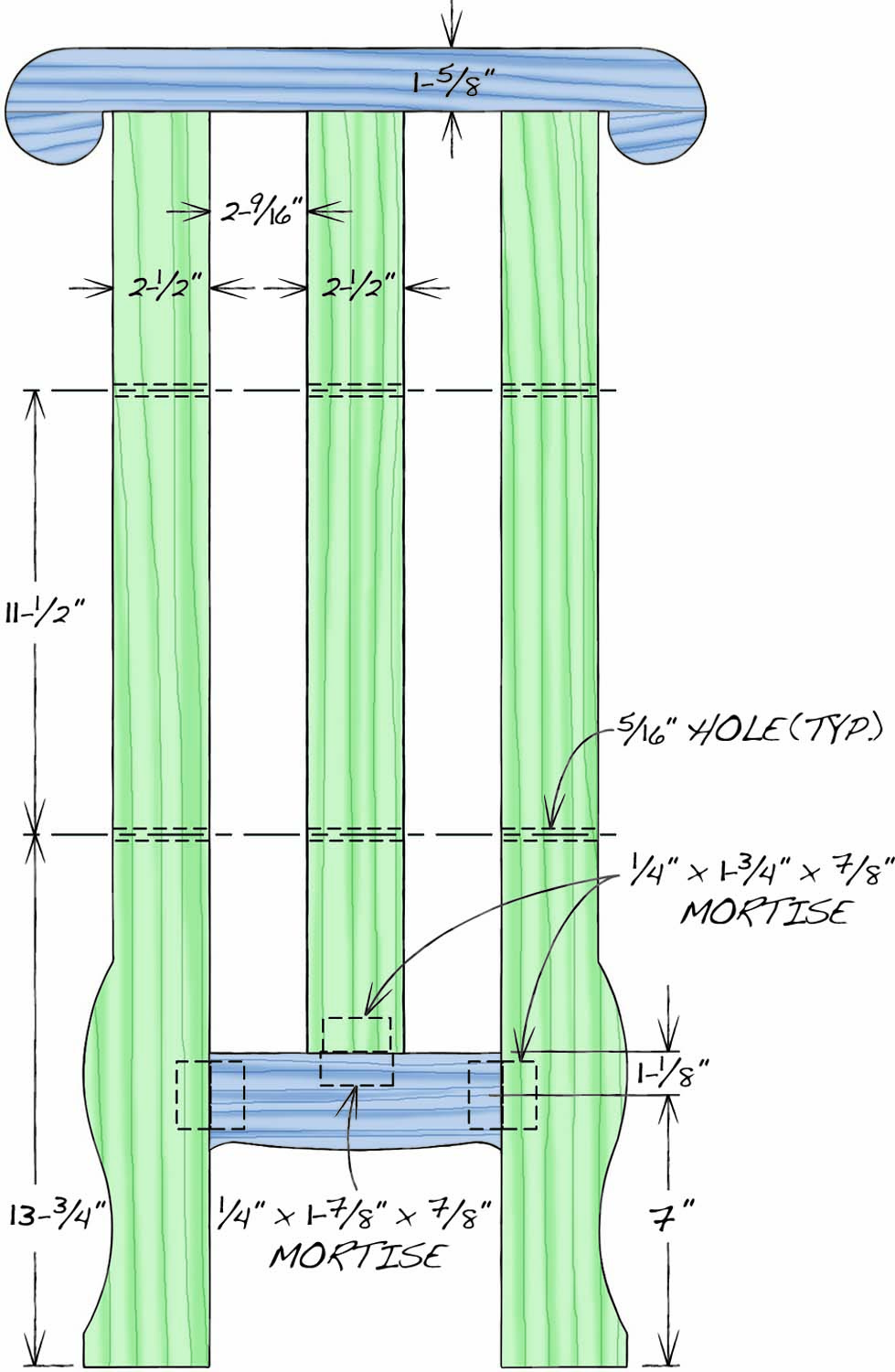
Fig. 02. Leg Assembly
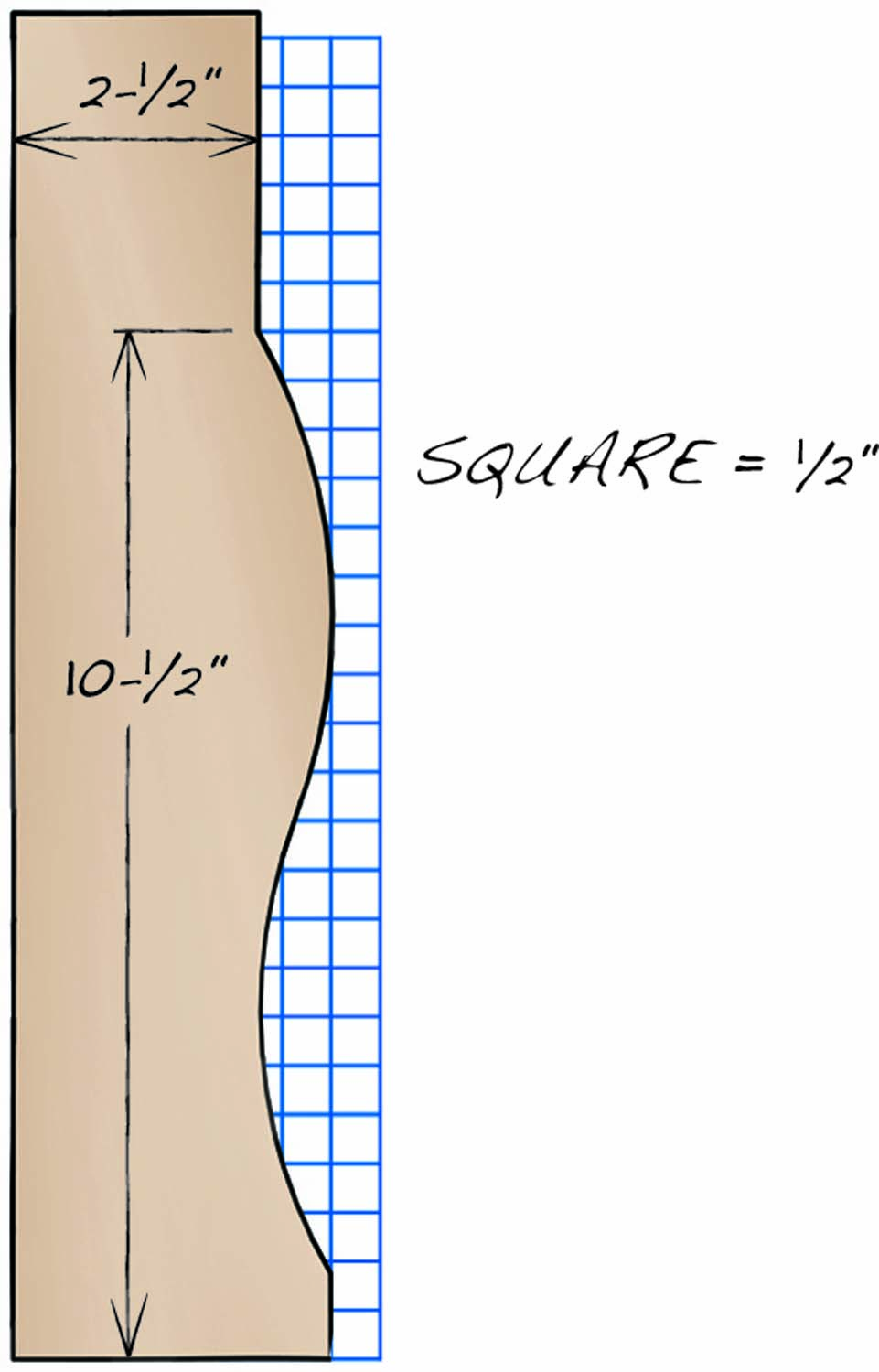
Fig. 03. Leg Pattern
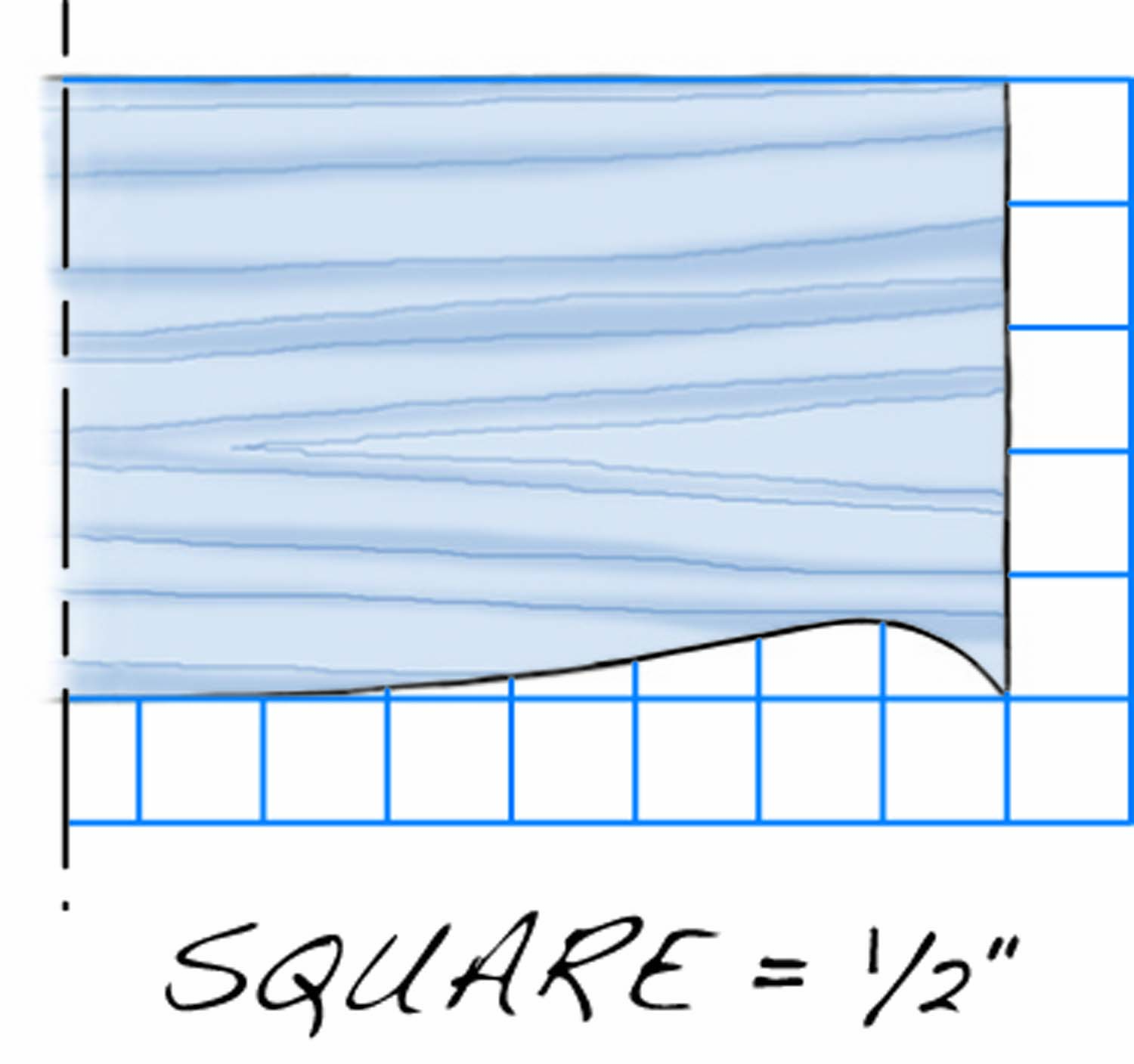
Fig. 04. Bottom Rail Pattern
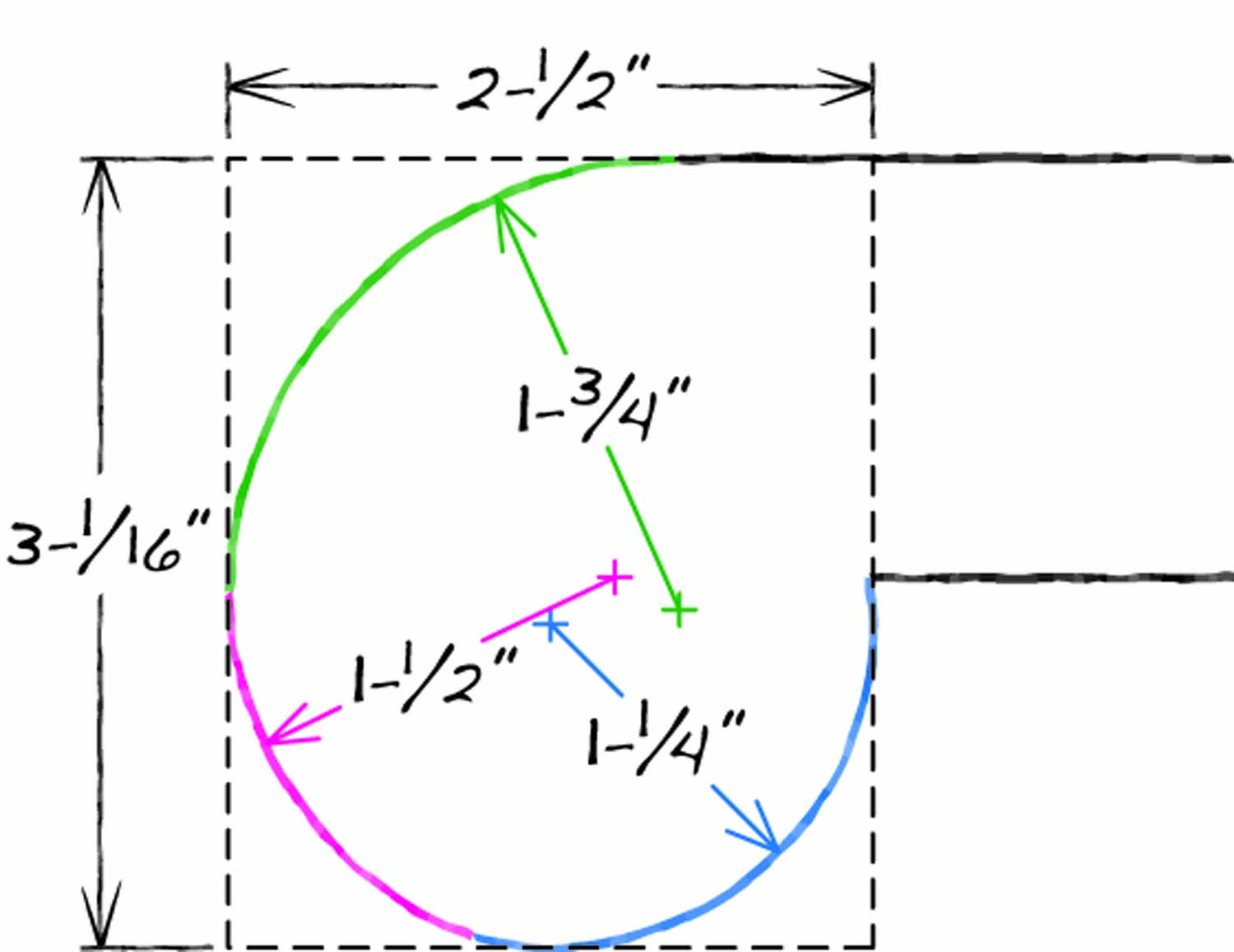
Fig. 05. Mitered Ends
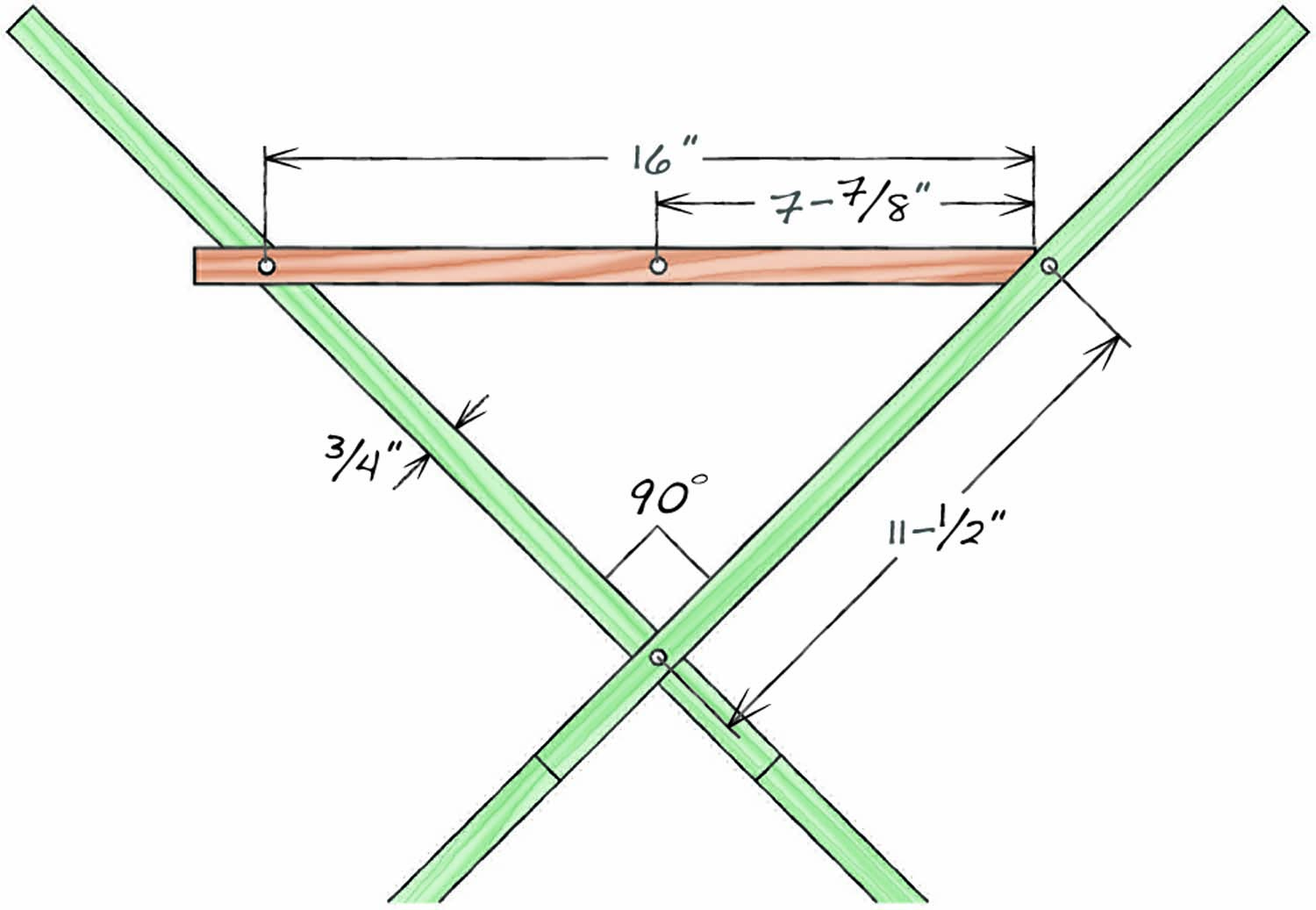
Fig. 06. Seat Slat Profile
Cut List
|
Folding Stool |
|||
|
Overall dimensions: 24″ H x 28-1/2″ W x 16-1/2″ D |
|||
|
Part |
Name |
Qty. |
Th x W x L |
|
A |
Leg |
4 |
3/4″ x 3-1/4″ x 32-1/2″ (a) |
|
B |
Center stile |
2 |
3/4″ x 2-1/2″ x 24-3/8″ (a) |
|
C |
Bottom rail |
2 |
3/4″ x 2-1/2″ x 7-9/16″ |
|
D |
Seat slat |
6 |
3/4″ x 2-1/2″ x 17-1/2″ |
|
E |
Top rail |
2 |
3/4″ x 3-1/2″ x 18-1/8″ (b) |
|
F |
Spacer |
4 |
3/4″ x 2-9/16″ x 24″ |
|
G |
Loose tenon |
6 |
1/4″ x 1-3/4″ x 1-1/2″ |
|
H |
Plug |
6 |
3/8″ dia. x 3/8″ |
|
Hardware |
|||
|
J |
Rod |
4 |
1/4″ dia. x 16-3/8″ (c) |
|
K |
Brass cap nut |
8 |
1/4-20 |
|
L |
Brass washer |
8 |
1/4-20 |
|
Notes: (a) Cut 1/4″ extra-long; trim to final length when assembled (b) Width and length depend on your design for the ends of the rail. (c) Determine actual length after stool is built. |
|||
Drill the rod holes
In the next steps, you’ll drill holes for the rods that enable the stool to fold together. While these holes are larger in diameter than the rods, allowing for some play, they must be precisely laid out and drilled to prevent the stool’s parts from binding. Precision is also necessary to ensure that the seat slats lie in the same plane when the stool is opened, forming a flat seat. Please note that the measurements for the locations of the rod holes in the seat slats only work if your material is exactly 3/4″ thick. If it’s thinner, the holes must be slightly closer together; if thicker, farther apart.
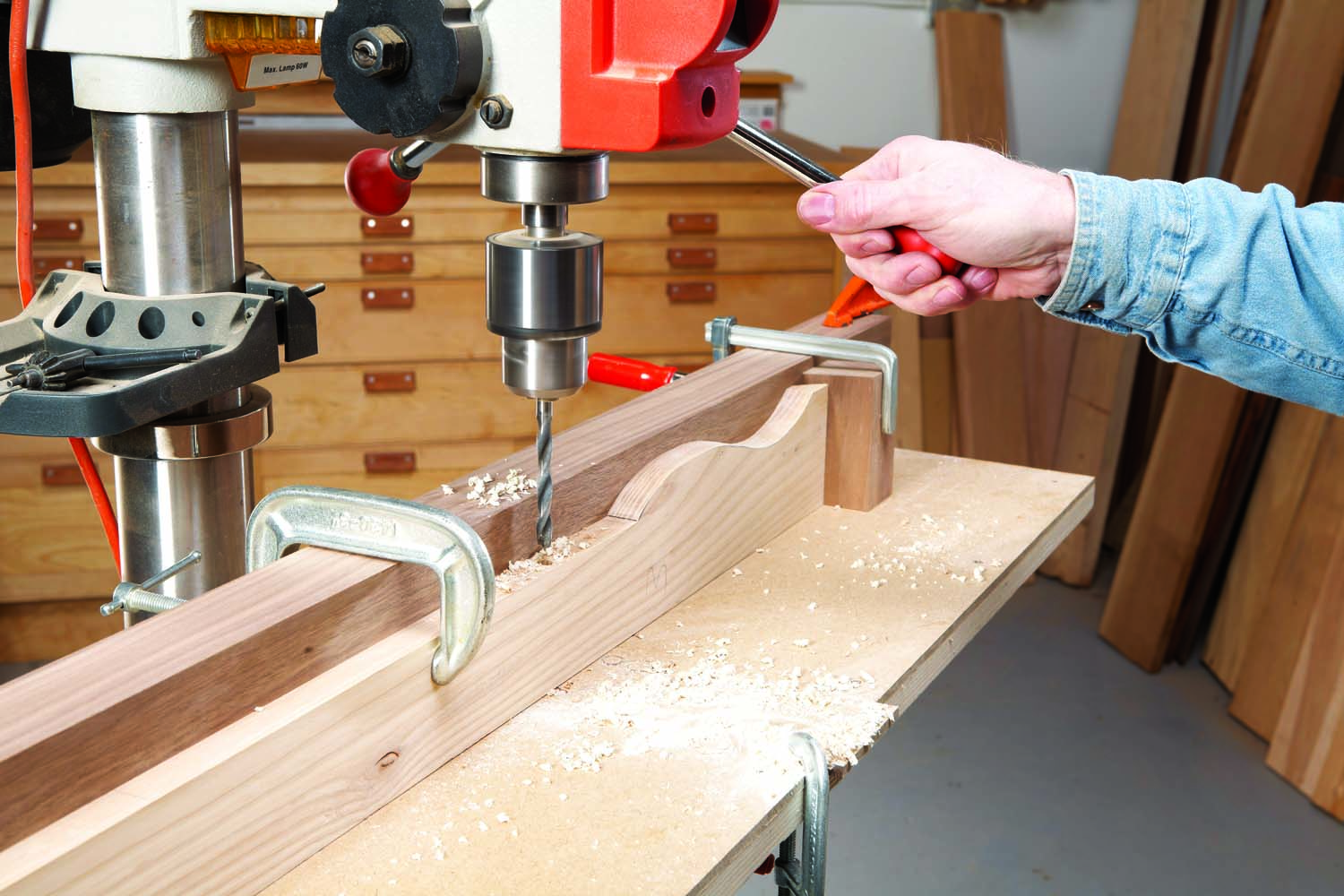
Photo 8. Drill holes for the rods that will pass through the stool’s folding parts. Use a large support table, a long fence, a stop block and a clamp to ensure that the holes are plumb and in the correct position.
The best way to drill the rod holes is to set up a long table and fence on your drill press (Photo 8). The table should support the full length of the workpiece. Clamping the workpiece to the fence ensures that it will be perpendicular when drilled. The fence also allows you to use a stop block to ensure all holes are in alignment.
First, mark the location of the rod holes through the legs (Fig. 02). Mark centerlines on the legs’ outside edges, then continue these lines across both faces of the legs. To lay out the corresponding holes in the center stiles, reassemble each half of the chair. Lay a straightedge along the centerlines and continue the lines across the face of each center stile. This method assures that all the holes will be in alignment.
Before you drill, be sure that the bit is precisely centered on your stock. (A brad point bit is easier to set up than a standard twist bit.) Drill the holes through all the legs and seat slats (Fig. 07), then use a cordless drill and a countersink bit to form large chamfers on both sides of each hole. These chamfers will make the chair much easier to assemble.
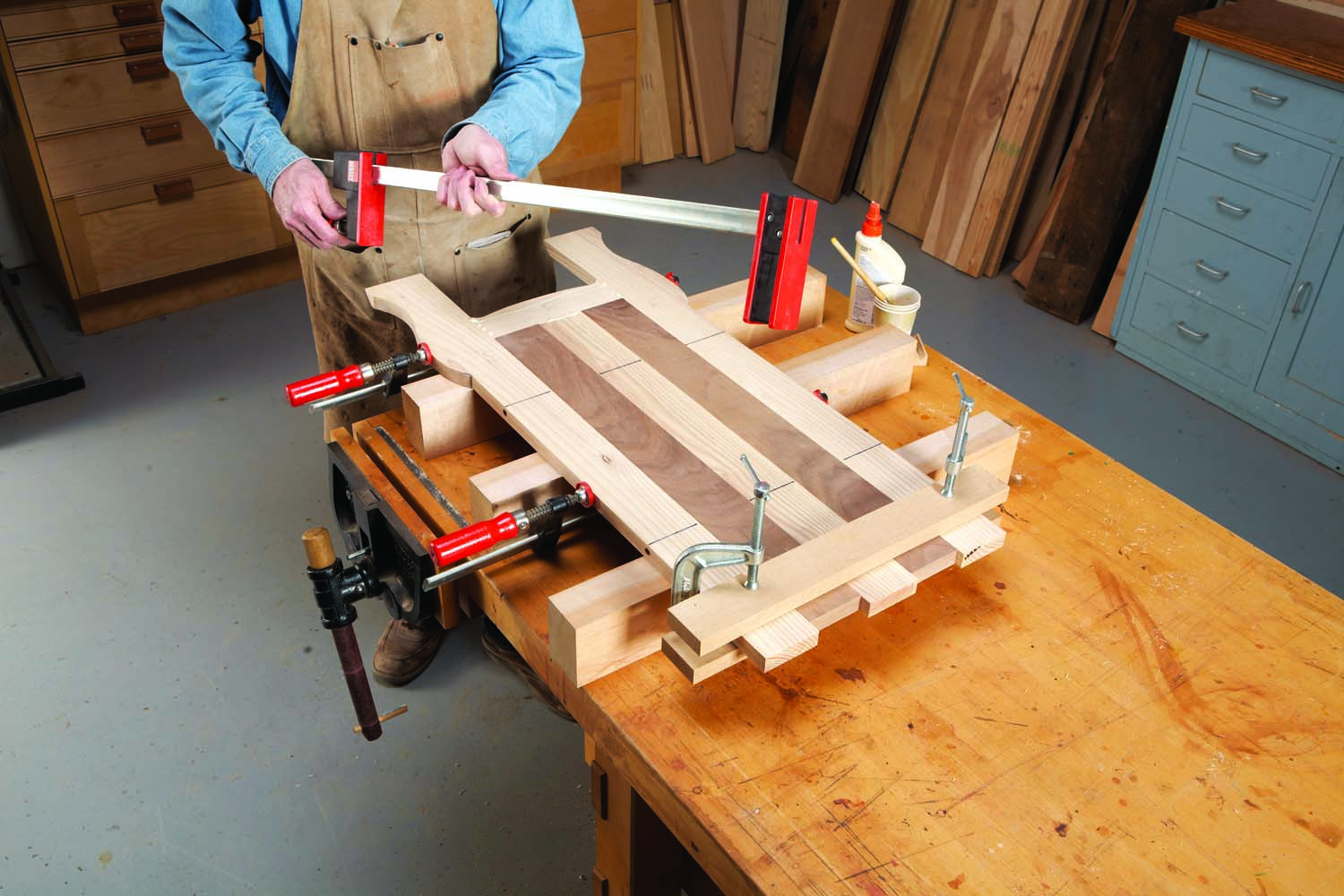
Photo 9. Glue the leg assemblies together, again using the spacers to ensure that the legs and center stile remain parallel. The spacers also ensure that both of the openings between the legs and stile will be the same width.
Glue the leg assemblies together (Photo 9). Clamp a pair of battens across the top of the legs and center stile to ensure that they stay in the same plane. In addition, place a clamp across the assembly, above the bottom rail, to pull the legs tight against the spacers.
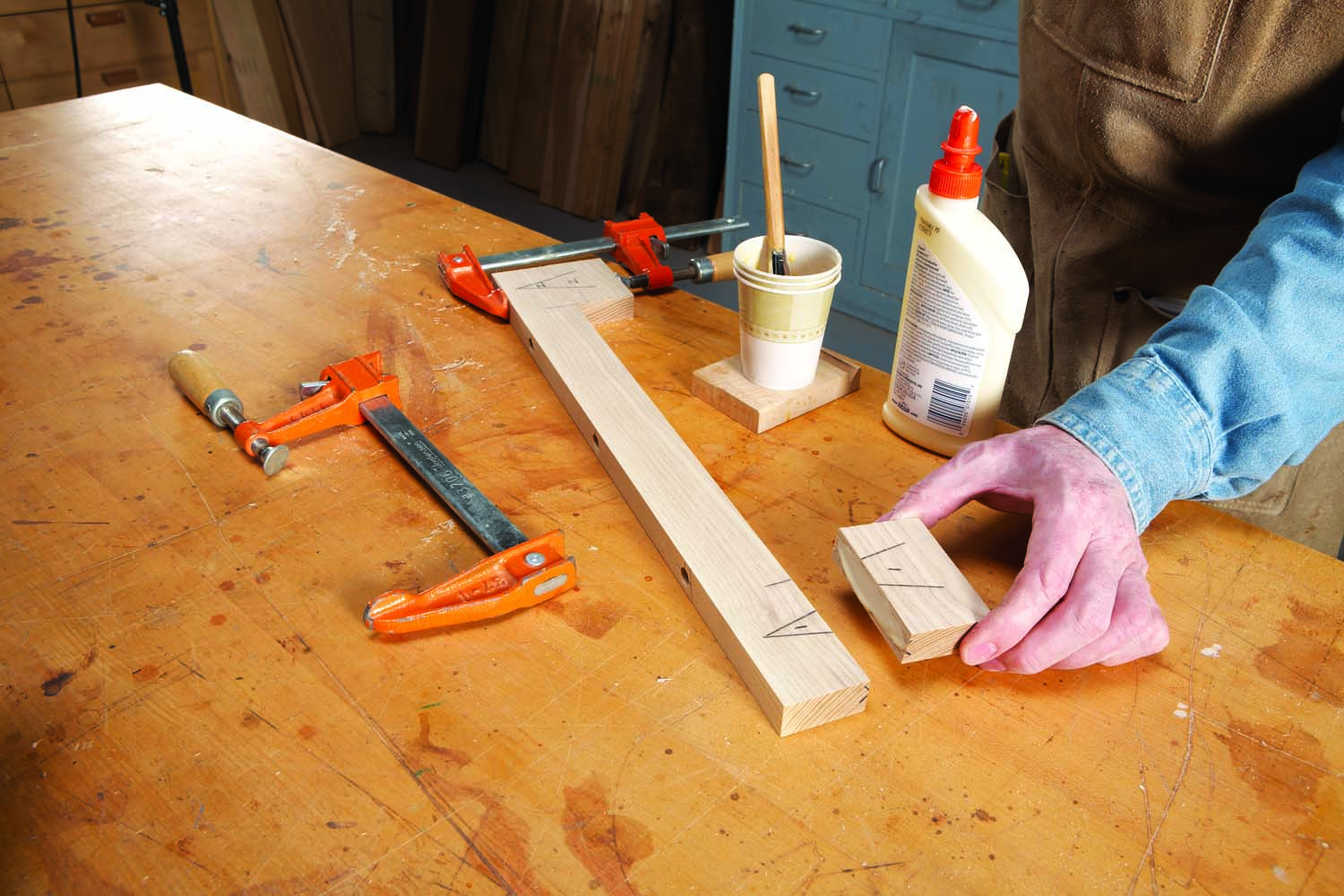
Photo 10. Glue “ears” on the ends of the top rails. Cut or carve them any way you wish to personalize your stool.
The last wooden parts to tackle are the stool’s top rails (E). They should look like they’re made from one piece, but their lower edges—the part that butts against the legs and center stile—must be absolutely straight. The best way to accomplish this is to make these pieces extra-wide and rip them in half. Joint the lower side of the upper section, then drill holes in it for the screws that will fasten the rails in place. Crosscut the lower section into three pieces, then glue the end pieces back onto the upper section (Photo 10). Lay out and saw the rail’s profile (Fig. 09).
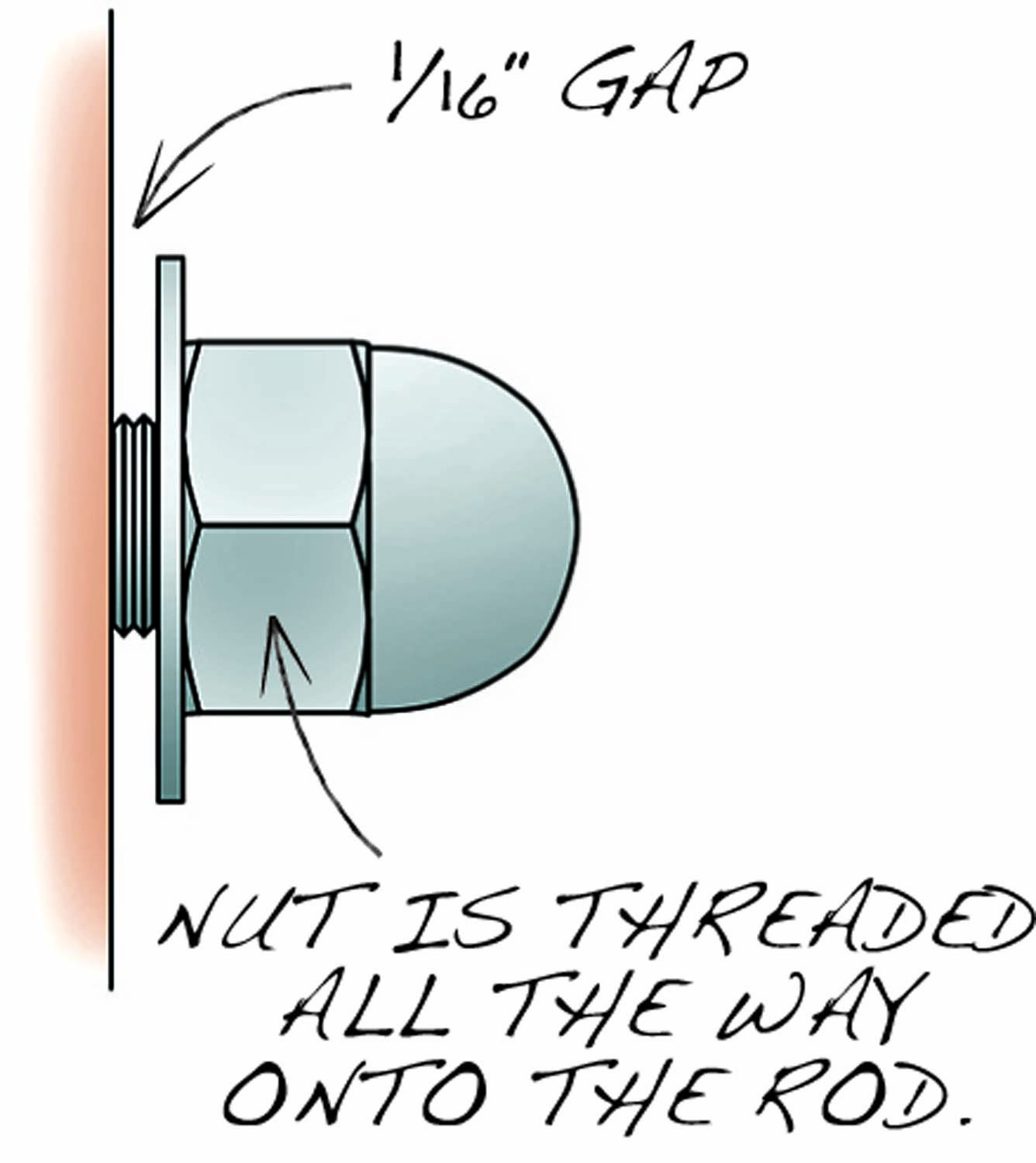
Fig. 07. Rod Hole Locations
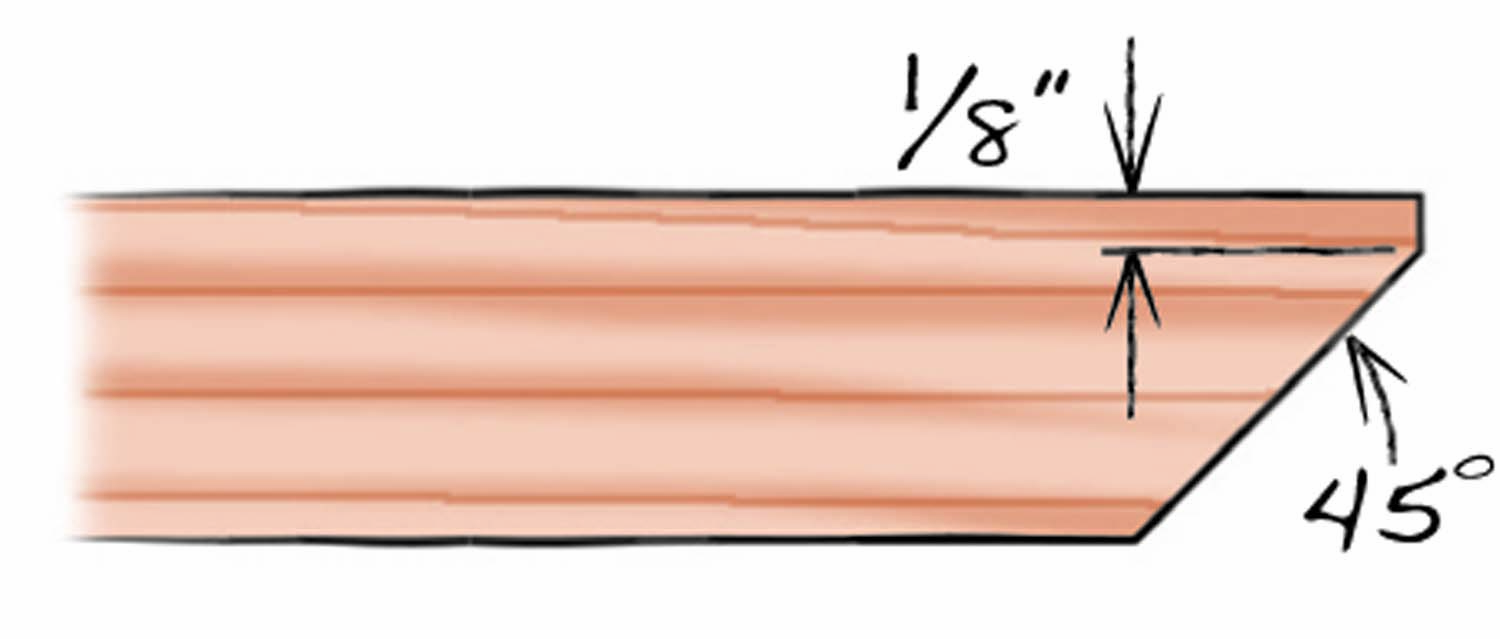
Fig. 08. Rod Length
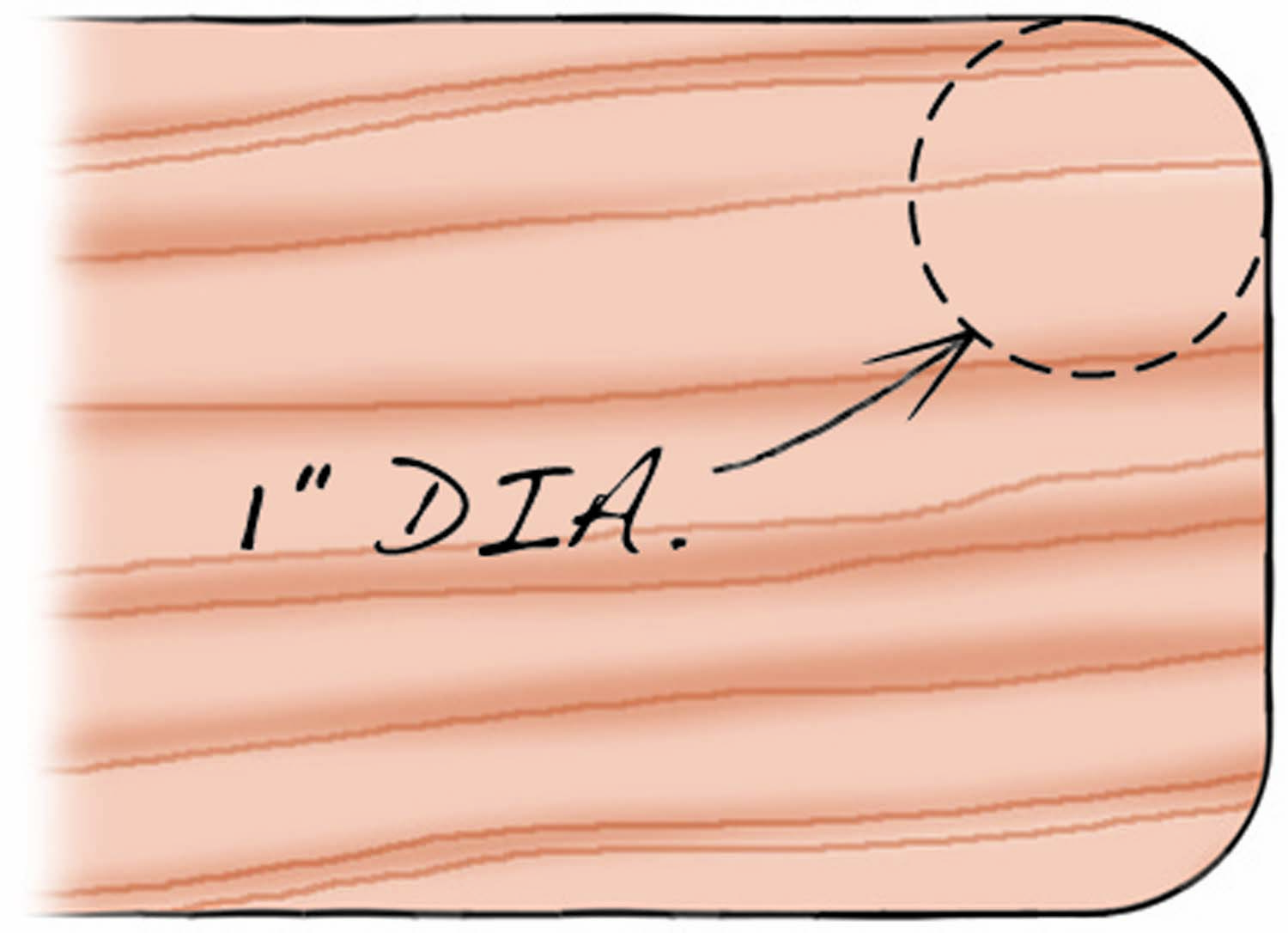
Fig. 09. Top Rail Pattern
Make the rods and assemble
sThere’s one more set of parts to make: the four metal rods (J) that pass through the stool. The round rod available at hardware stores comes in two types, hot-rolled and cold-rolled. Buy the cold-rolled. Hot-rolled rod is covered with a tough scale that can damage a tap, and generally isn’t truly round.
To measure an exact length for the rod (all four pieces are the same length), place one seat slat alongside a leg assembly. Measure this distance, then add enough additional length for the rod to bottom out in a pair of cap nuts (K) and pass through a pair of washers (L). In addition, allow two healthy gaps between the washers and the stool (Fig. 08).
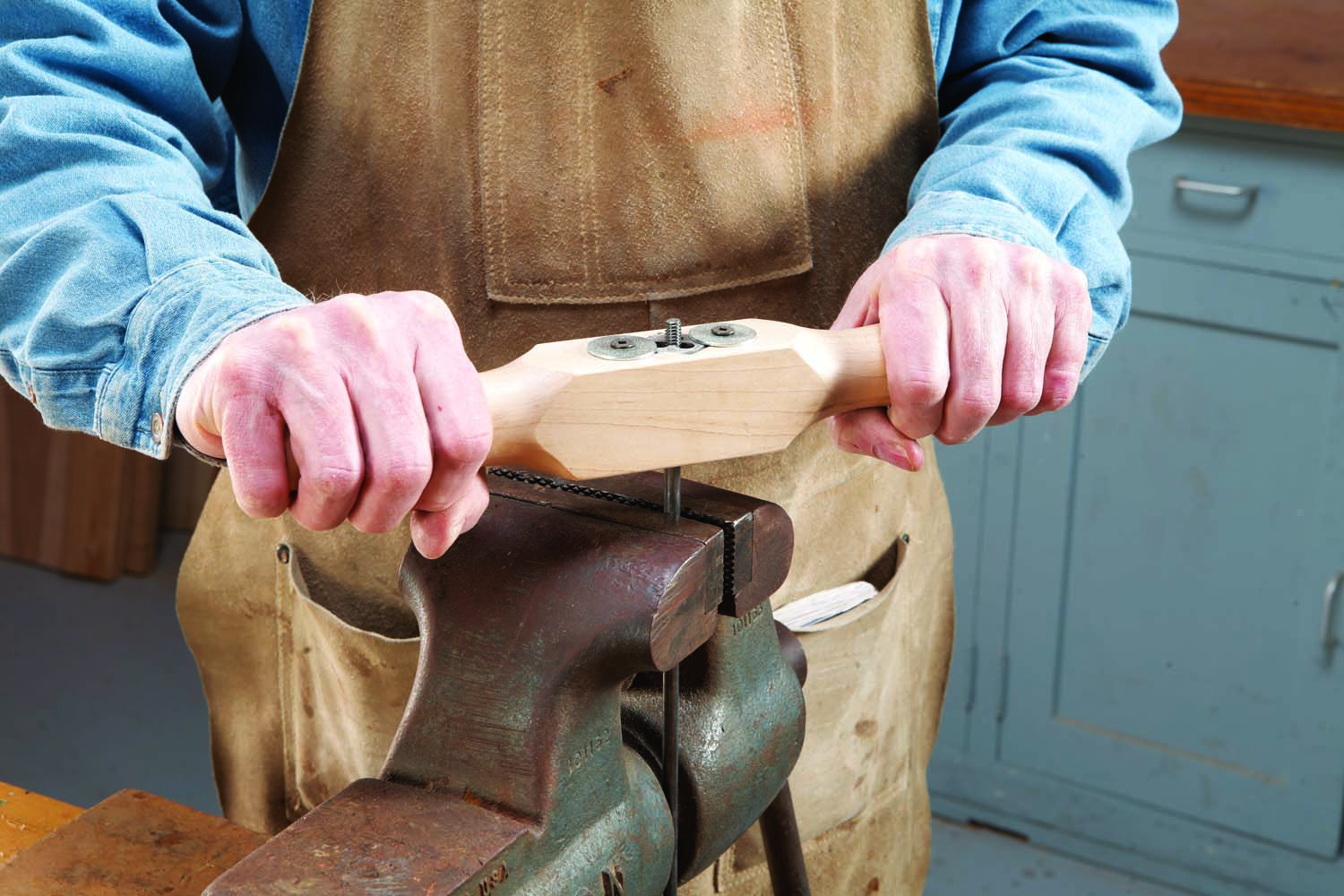
Photo 11. Thread the ends of four pieces of 1/4″ cold-rolled rod. Use a shop-made tap to make sure that the threads are straight.
Cut the rod to length, then thread about 3/4″ down both ends of each piece (Photo 11). I made an improved holder for my 1/4-20 tap to ensure that the threads would be straight.
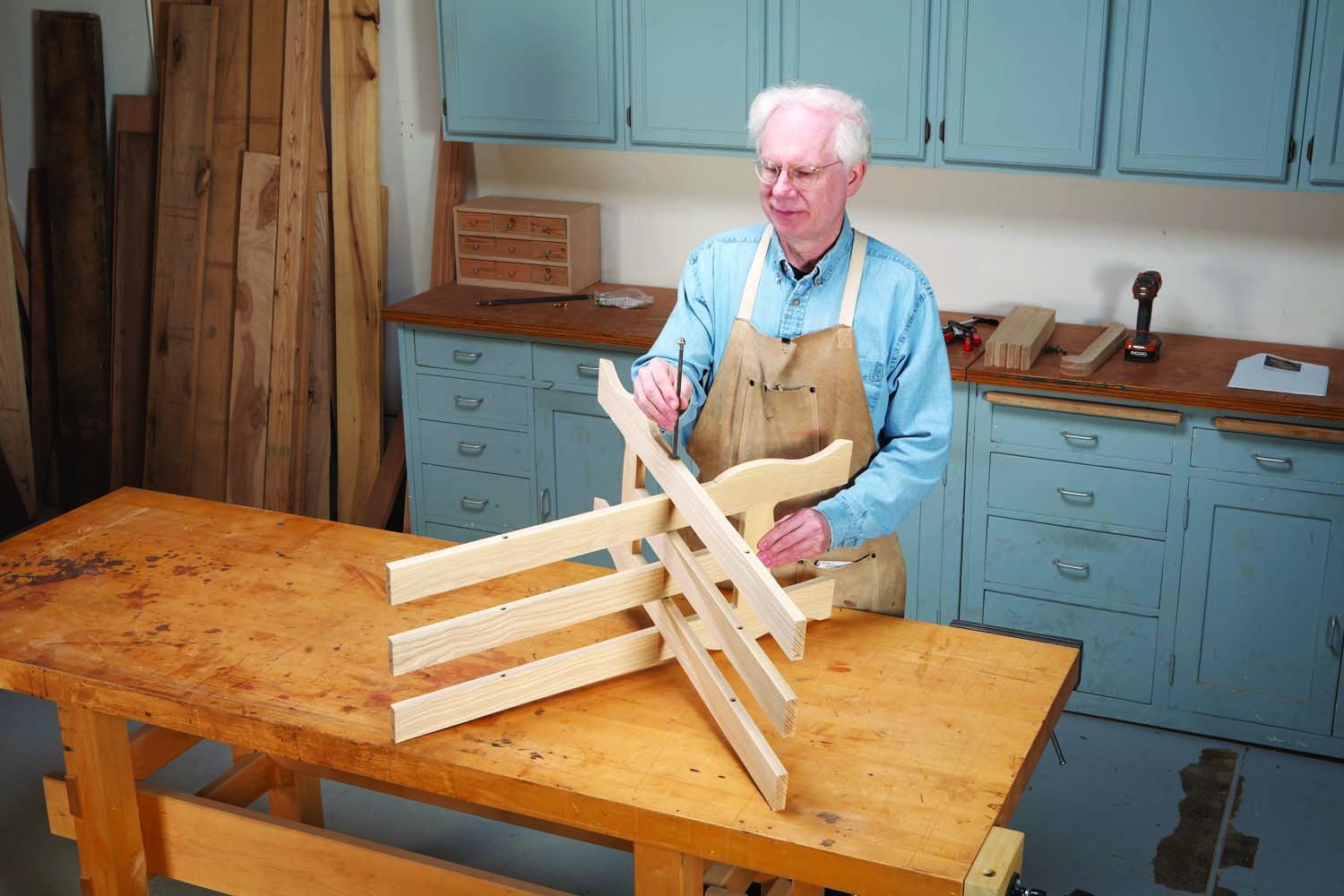
Photo 12. Assembling the stool is a four-step process. First, insert a rod through both leg assemblies.
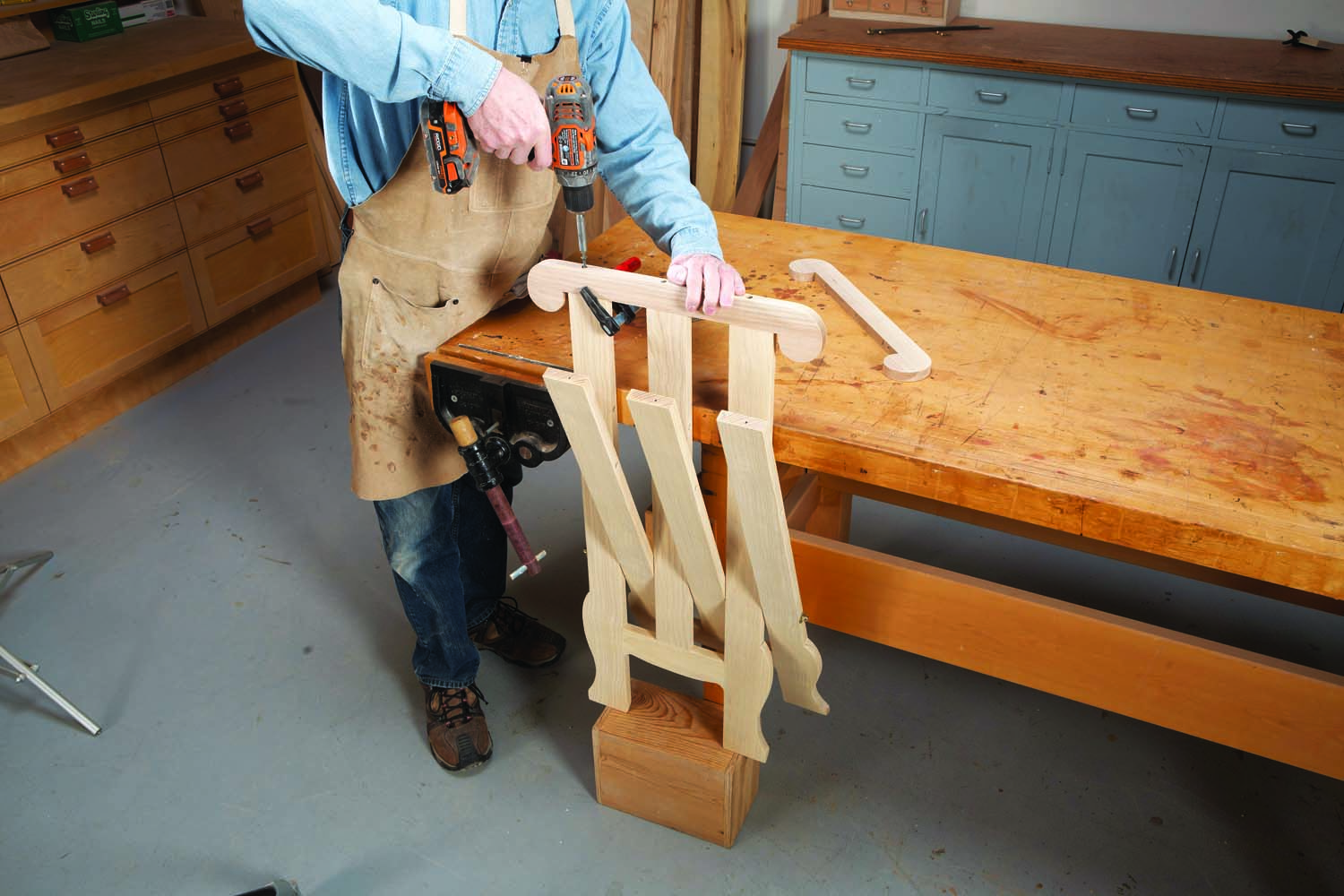
Photo 13. Fasten the top rails to both assemblies with screws. Clamp the parts together to make sure they stay flush.
Assemble the stool to make sure the rod holes all line up. First, run one rod through the lower holes in both leg assemblies (Photo 12). Second, fasten both top rails in place (Photo 13). You can make the plugs (H) that cover the screws at this time, but don’t glue them in the holes yet. Third, install both sets of seat slats using two more rods (Photo 14). Run the last rod between all of the slats (Photo 15). When you turn the stool upright, everything should fall right in place.
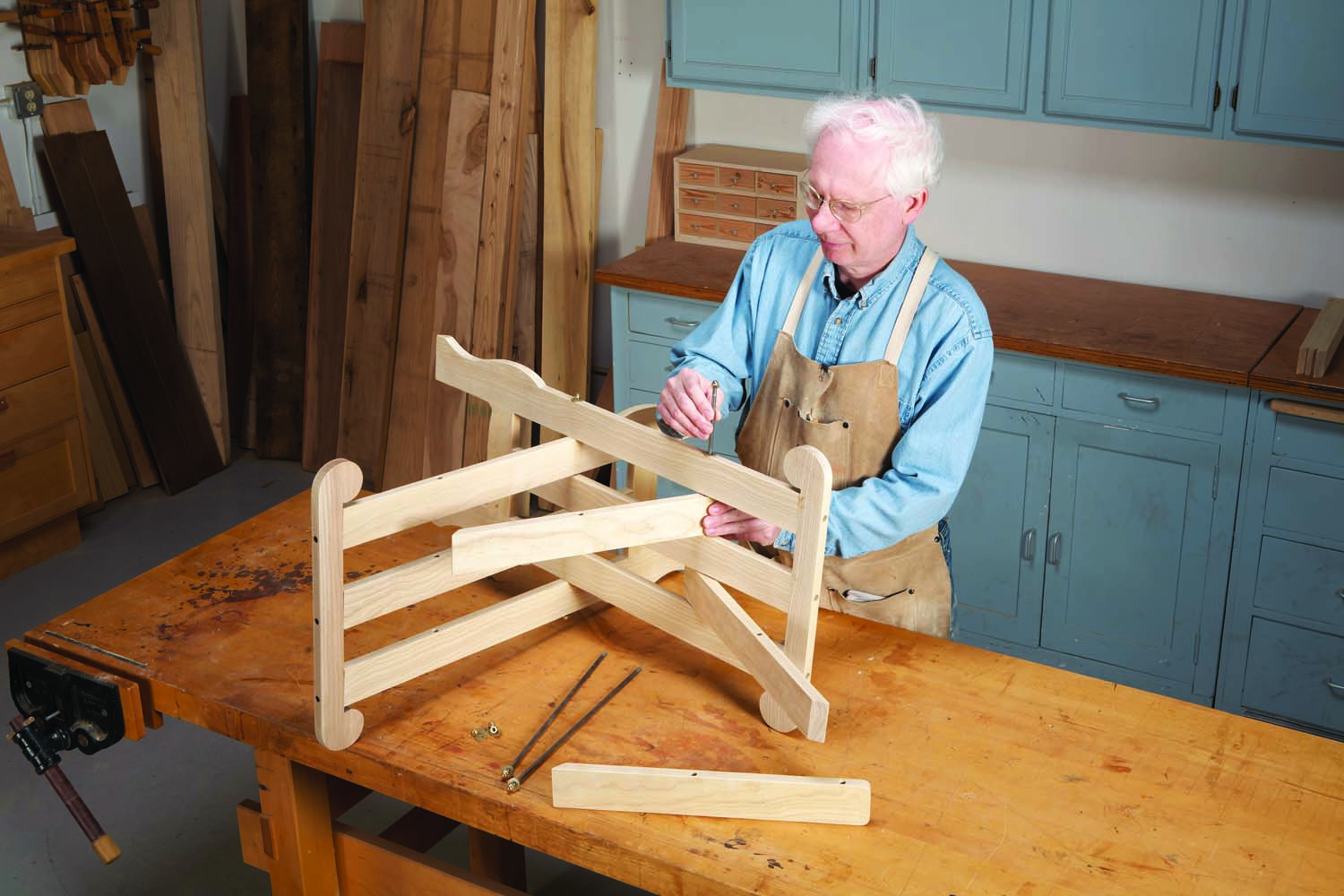
Photo 14. Next, install seat slats on both sides of the stool. The slats also pivot on a rod.
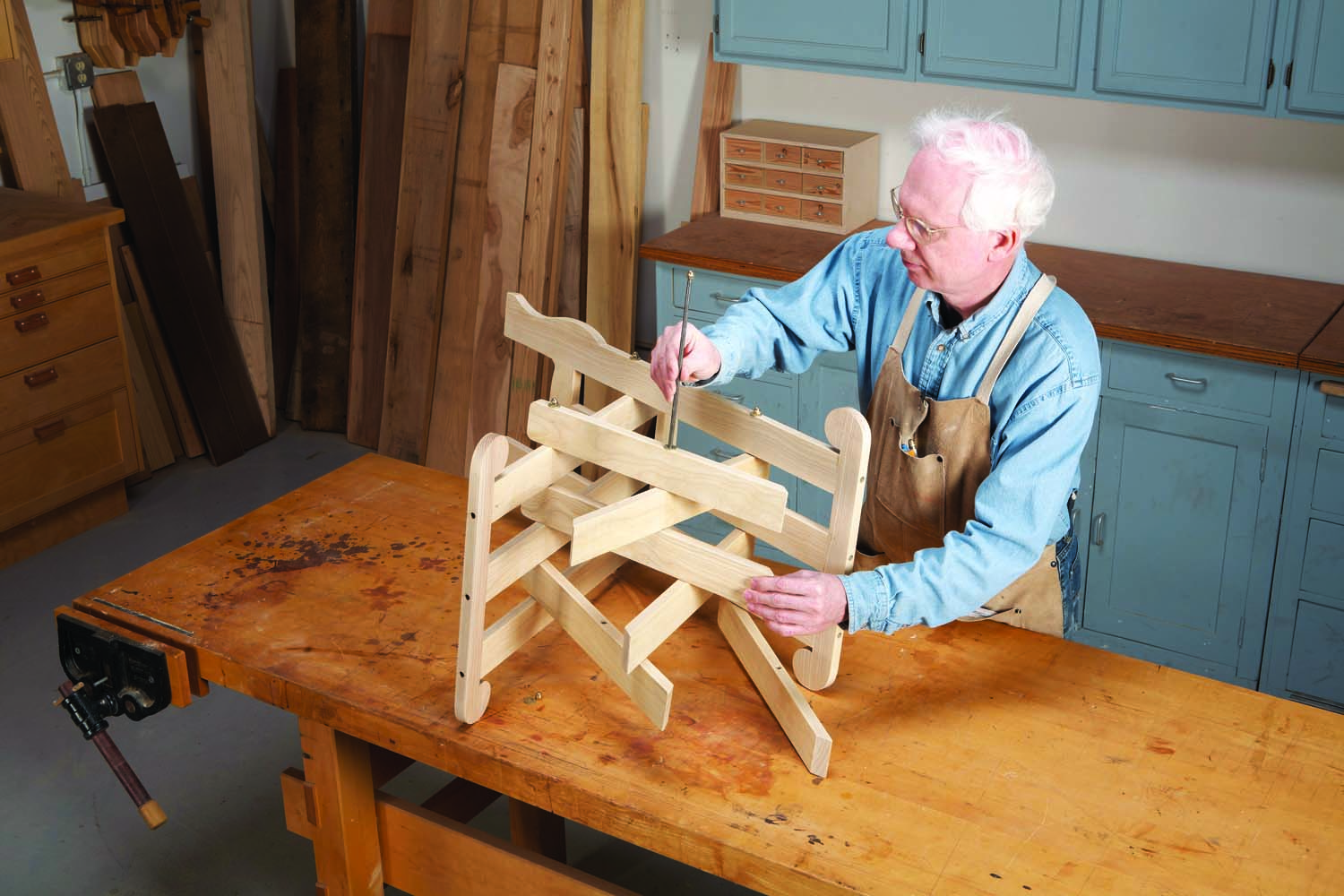
Photo 15. Complete the assembly by passing a rod through the center of all of the slats. Thread cap nuts on both ends of the rods to hold them in place.
With so many interlocking pieces, it’s best to finish the stool by taking it apart. Temporarily re-attach the top rails, break every sharp edge with 100-grit sandpaper and apply three coats of finish (I used a water-based poly). When you reassemble the stool, glue on the top rails and add the screw plugs.
Here are some supplies and tools we find essential in our everyday work around the shop. We may receive a commission from sales referred by our links; however, we have carefully selected these products for their usefulness and quality.








